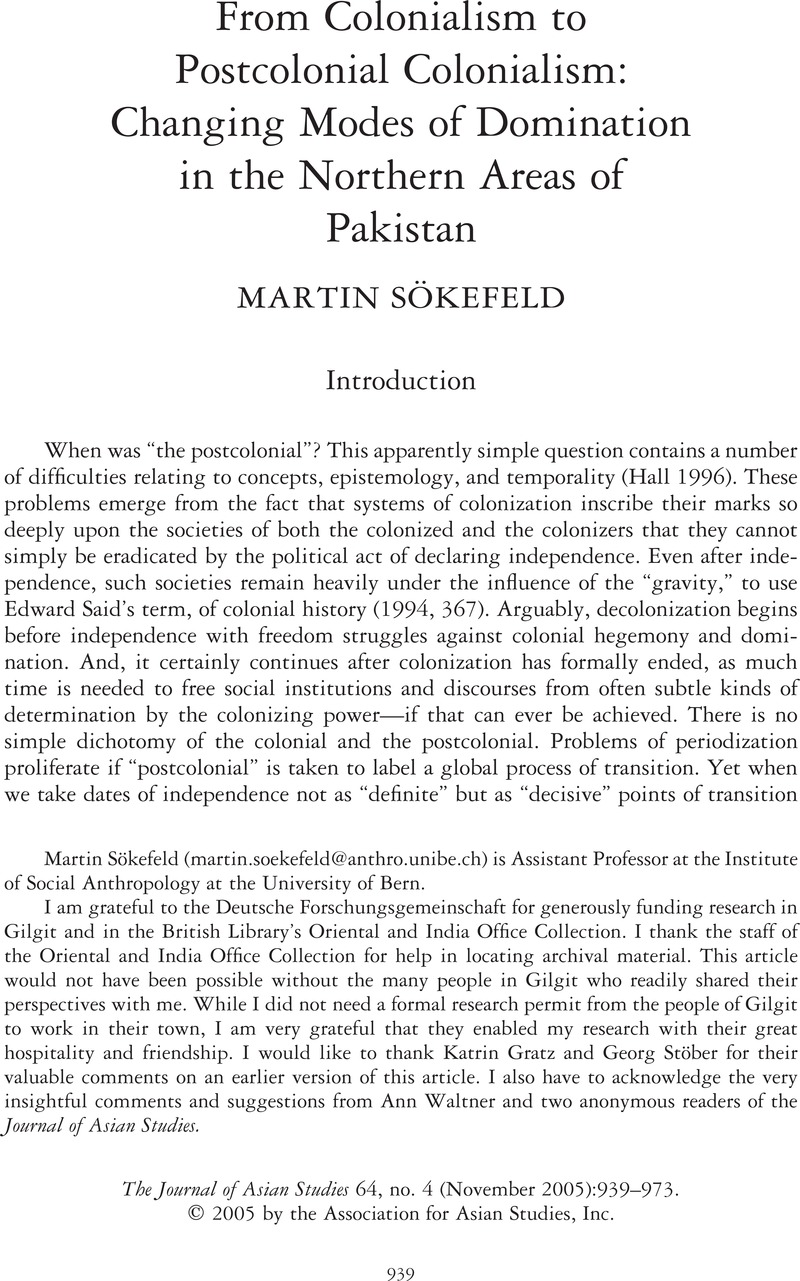Crossref Citations
This article has been cited by the following publications. This list is generated based on data provided by Crossref.
Marsden, Magnus
2007.
Islam, political authority and emotion in northern Pakistan.
Contributions to Indian Sociology,
Vol. 41,
Issue. 1,
p.
41.
MARSDEN, MAGNUS
2007.
All‐male sonic gatherings, Islamic reform, and masculinity in northern Pakistan.
American Ethnologist,
Vol. 34,
Issue. 3,
p.
473.
Ali, Nosheen
2008.
Outrageous State, Sectarianized Citizens:Deconstructing the ‘Textbook Controversy’ in the Northern Areas, Pakistan.
South Asia Multidisciplinary Academic Journal,
Bangash, Yaqoob Khan
2010.
Three Forgotten Accessions: Gilgit, Hunza and Nagar.
The Journal of Imperial and Commonwealth History,
Vol. 38,
Issue. 1,
p.
117.
Knudsen, Are
2011.
Logging the ‘Frontier’: Narratives of Deforestation in the Northern Borderlands of British India, c. 1850–1940.
Forum for Development Studies,
Vol. 38,
Issue. 3,
p.
299.
Hussain, Shafqat
2012.
La fabrique de la démocratie.
p.
217.
Hussain, Shafqat
2012.
Democracy at Large.
p.
191.
Sökefeld, Martin
2012.
Identität.
p.
39.
HUSSAIN, SHAFQAT
2012.
Forms of Predation: Tiger and Markhor Hunting in Colonial Governance.
Modern Asian Studies,
Vol. 46,
Issue. 5,
p.
1212.
Rizvi, Wajiha Raza
2013.
BeDevil
: Colonialism and the children of miscegenation
.
The Journal of International Communication,
Vol. 19,
Issue. 1,
p.
43.
Bouzas, Antia
2013.
Peripheralization.
p.
77.
Mostowlansky, Till
2014.
Where Empires Meet : Orientalism and Marginality at the Former Russo-British Frontier*.
Études de lettres,
p.
179.
Sökefeld, Martin
2015.
Jammu and Kashmir – boundaries and movements.
Contemporary South Asia,
Vol. 23,
Issue. 3,
p.
251.
Hopkins, Benjamin D.
2015.
The Frontier Crimes Regulation and Frontier Governmentality.
The Journal of Asian Studies,
Vol. 74,
Issue. 2,
p.
369.
Karrar, Hasan H.
and
Mostowlansky, Till
2018.
Assembling marginality in northern Pakistan.
Political Geography,
Vol. 63,
Issue. ,
p.
65.
Shah, Saeeda
2018.
‘We are equals’; datum or delusion: perceptions of Muslim women academics in three Malaysian universities.
British Journal of Sociology of Education,
Vol. 39,
Issue. 3,
p.
299.
Spies, Michael
2018.
Changing Food Systems and Their Resilience in the Karakoram Mountains of Northern Pakistan: A Case Study of Nagar.
Mountain Research and Development,
Vol. 38,
Issue. 4,
p.
299.
Feyyaz, Muhammad
2019.
Geopolitics, statehood, violence and space compression in Gilgit-Baltistan.
South Asian History and Culture,
Vol. 10,
Issue. 1,
p.
28.
Karrar, Hasan H.
2019.
In the Shadow of the Silk Road.
Comparative Studies of South Asia, Africa and the Middle East,
Vol. 39,
Issue. 3,
p.
389.
Dedeoğlu, Çağdaş
2019.
The Ontology of Security and its Implications for Maritime Security.
Güvenlik Stratejileri Dergisi,
Vol. 15,
Issue. 32,
p.
631.



